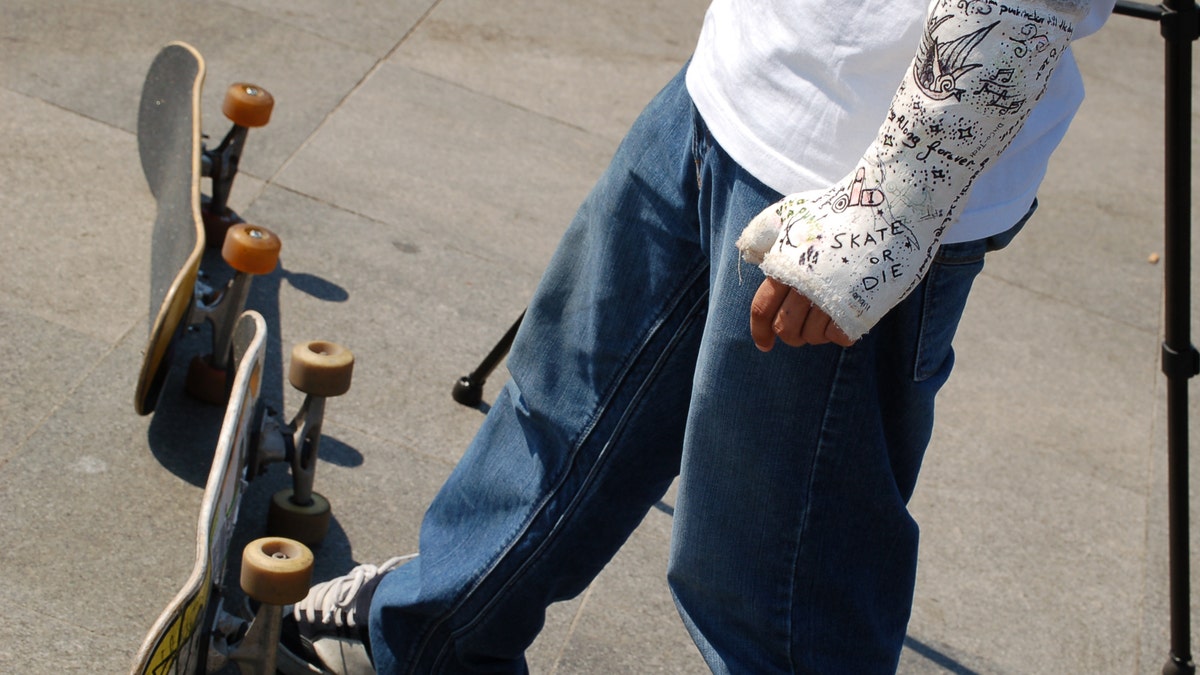
a young skater in Istanbul he has a very nice plaster in his wrist. (semstick)
Bone health and osteoporosis are typically thought of as issues that affect people later in life.
But the groundwork for such conditions is laid in childhood and adolescence, experts say, making bone health crucial during those stages. About half of the skeleton’s density is developed during puberty.
“You can’t wake up when you’re 50 and say, ‘I think I’m going to fix my bones now,’ ” says Laura Bachrach, a pediatric endocrinologist and professor of pediatrics at Stanford University School of Medicine and co-author of a clinical report on bone density published this month in the journal Pediatrics. “The time you want to be working on this is through childhood, especially in adolescence, so that you have the healthiest bones you possibly can.”
Experts say ensuring adequate levels of calcium and vitamin D and regular physical exercise—particularly when it’s weight-bearing—are important in developing and maintaining healthy and strong bones.
Peak bone mass typically occurs between ages 20 and 30. After that, as people age, they naturally lose bone mass. This can be exacerbated by some medications. For women, the decade in which menopause occurs results in an especially steep decrease in bone density, which leads to a higher risk of developing osteoporosis.
